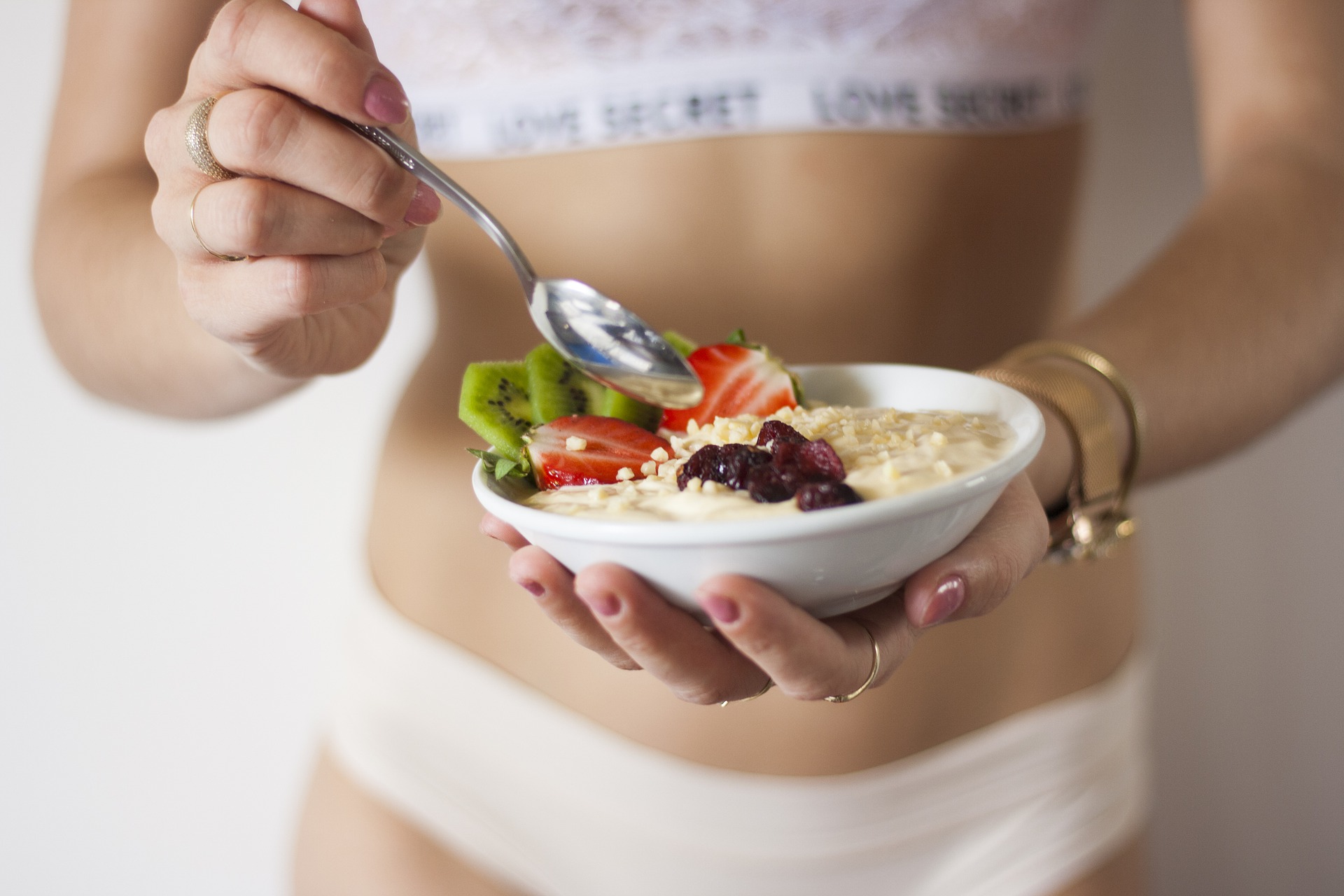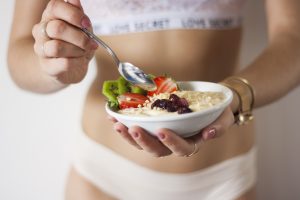




Not all fiber is the same.
Fiber is either soluble or insoluble. Soluble fiber dissolves in water, becomes a gel and is used to feed the healthy bacteria in your intestines. Insoluble fiber doesn’t break down, but instead supplies bulk to the stool and keeps things moving in the colon. Some sources of insoluble fiber are oat bran, beans, whole grains, coconut, avocados, greens, berries, celery and wheat germ. Some food containing soluble fiber include psyllium husk, flax seed, beans, whole grains, apples, pears, asparagus, Brussels sprouts, broccoli and sweet potatoes.
Weight loss is easier when you add fiber.
Foods that are higher in fiber fill you up and make you feel fuller longer. They also help support your digestive system and regulate your blood sugar and blood cholesterol levels. When your blood sugar is level, it prevents spikes that can send insulin levels soaring, then cause a huge drop. That leaves you feeling hungrier. It can also cause insulin resistance, which is considered prediabetes by many. Insulin resistance is associated with increased weight around the midsection—belly fat.
Fiber helps you absorb more nutrients.
Not only does fiber slow the process of digestion in the colon, which lets the body absorb more nutrients, it also feeds the healthy bacteria. Healthy microbes break food down and play an intricate role in our nutritional process. There are between 30 trillion and 400 trillion microbes in the body, most of which are in the gut. They control bodily functions, boost your immune system, affect your hormones, break down food to make nutrients available and even control emotions and hormones. Some are responsible for the hunger-satiety balance of hormones and can make you feel full faster and less hungry.
- Unlike many nutrients, once you pass 50, your need for fiber decreases. Men under 50 require 38 grams a day, while their 50+ counterparts only require 30 grams. Women under 50 need 25 grams and women over 50 require 21 grams.
- Start your day right with fiber. A bowl of oatmeal with fresh fruit and nuts provides both fiber and protein. An apple with nut butter is a high fiber snack. Make sure you eat the peel for increased fiber.
- Increasing your fiber dramatically all at once, can cause problems like constipation, diarrhea, gas, bloating, cramps, GERD and blockage, mineral deficits
- One of the problems faced by people when increasing fiber in their diet is dehydration. If you’re increasing fiber in your diet, take it slowly and increase your water intake at the same time.
For more information, contact us today at Travel Trim
